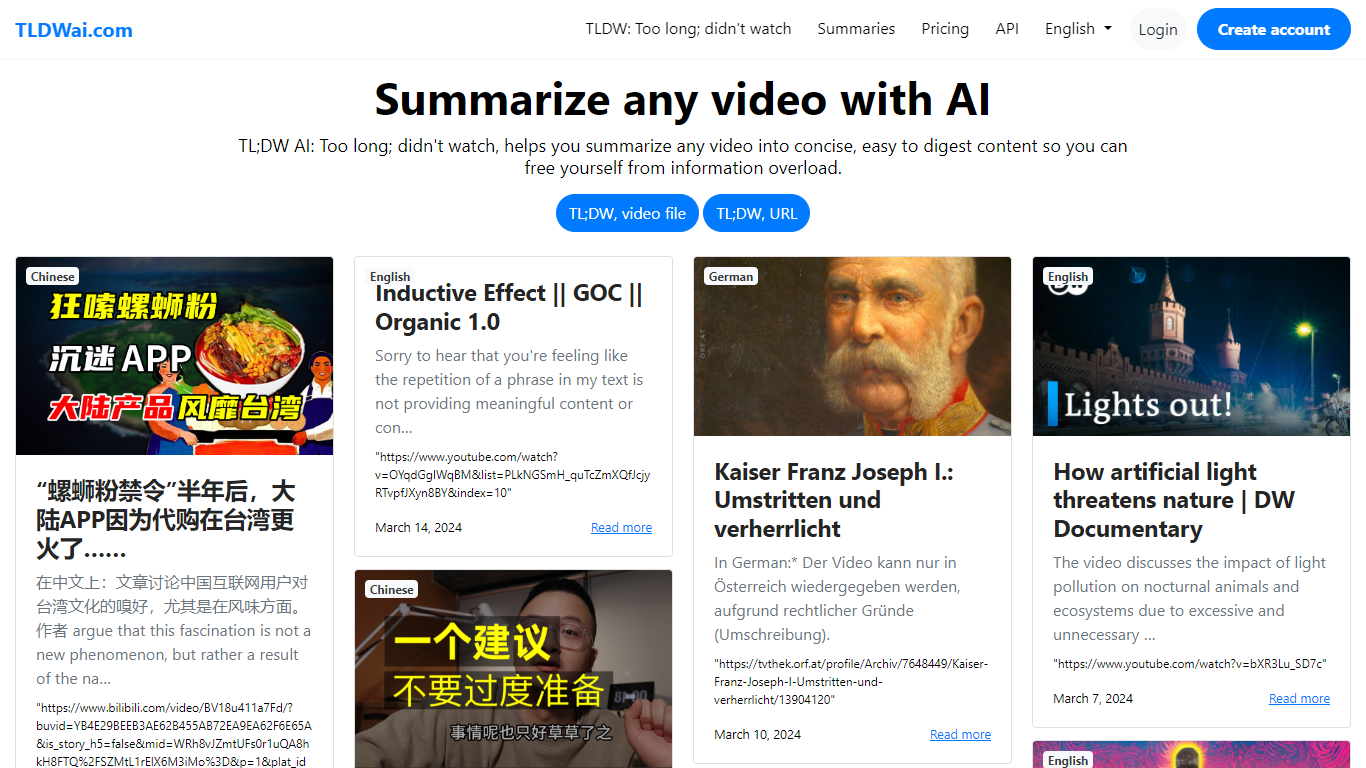TLDWai vs Typeset
In the face-off between TLDWai vs Typeset, which AI Summarizer tool takes the crown? We scrutinize features, alternatives, upvotes, reviews, pricing, and more.
In a face-off between TLDWai and Typeset, which one takes the crown?
If we were to analyze TLDWai and Typeset, both of which are AI-powered summarizer tools, what would we find? The upvote count favors Typeset, making it the clear winner. Typeset has received 25 upvotes from aitools.fyi users, while TLDWai has received 6 upvotes.
Don't agree with the result? Cast your vote and be a part of the decision-making process!
TLDWai

What is TLDWai?
TLDW AI, available at TLDWai.com, is an innovative artificial intelligence service designed to create summaries from videos.
For those who have ever felt overwhelmed by lengthy videos and wished for a concise explanation of the content, TLDW AI offers a solution. With the help of advanced AI technology, it processes video content and provides users with a summary, making it easier to digest and understand information in a fraction of the time.
The service is user-friendly and accessible, catering to various languages, which ensures that it is open to a broad audience. Whether you're looking for a quick recap of a video or need summaries for study or work purposes, TL;DW AI is your go-to platform.
Typeset

What is Typeset?
Your platform to explore and explain papers. Search for 270M+ papers, understand them in simple language, and find connected papers, authors, topics.
TLDWai Upvotes
Typeset Upvotes
TLDWai Top Features
Multi-Language Support: The platform offers summaries in multiple languages, catering to a diverse user base.
User Accounts: Allows users to create accounts to manage their activity and preferences.
API Access: Provides API access for developers to integrate TL;DW AI's functionality into other applications.
Video Summaries: Uses AI to generate concise summaries from long videos.
Typeset Top Features
No top features listedTLDWai Category
- Summarizer
Typeset Category
- Summarizer
TLDWai Pricing Type
- Freemium
Typeset Pricing Type
- Free
